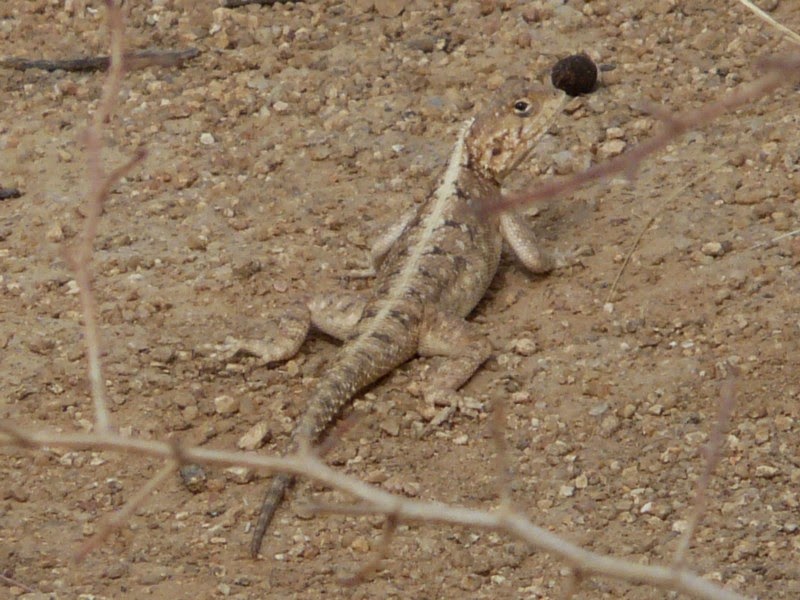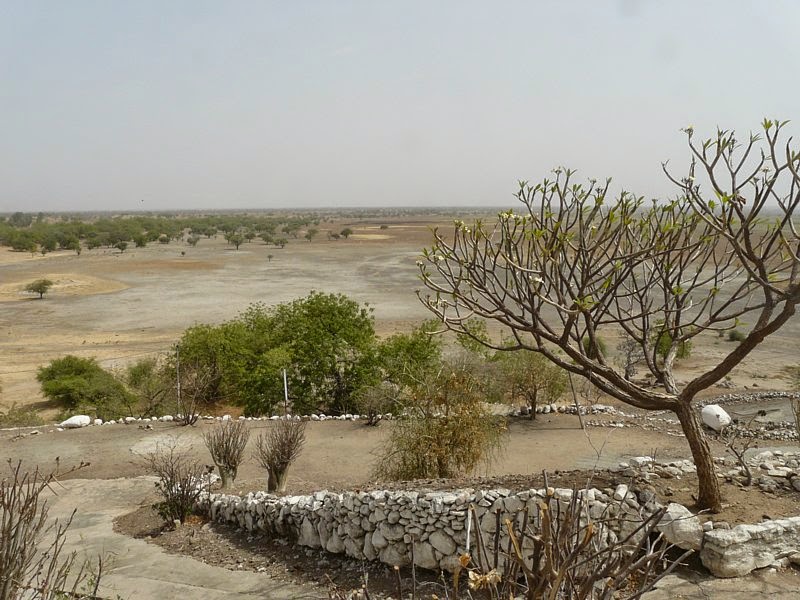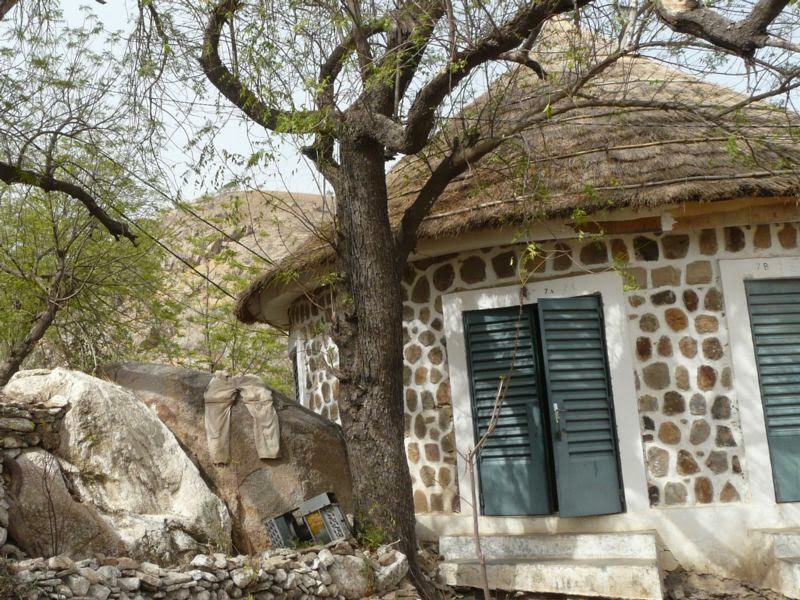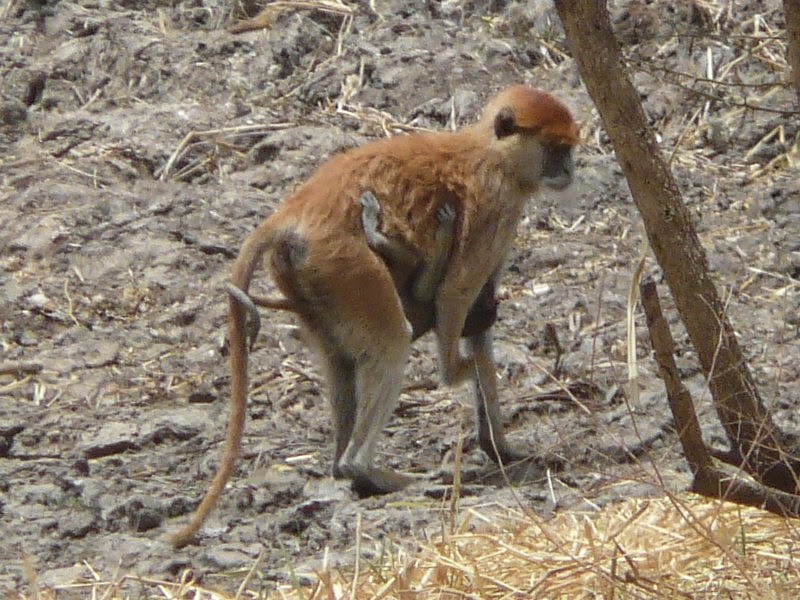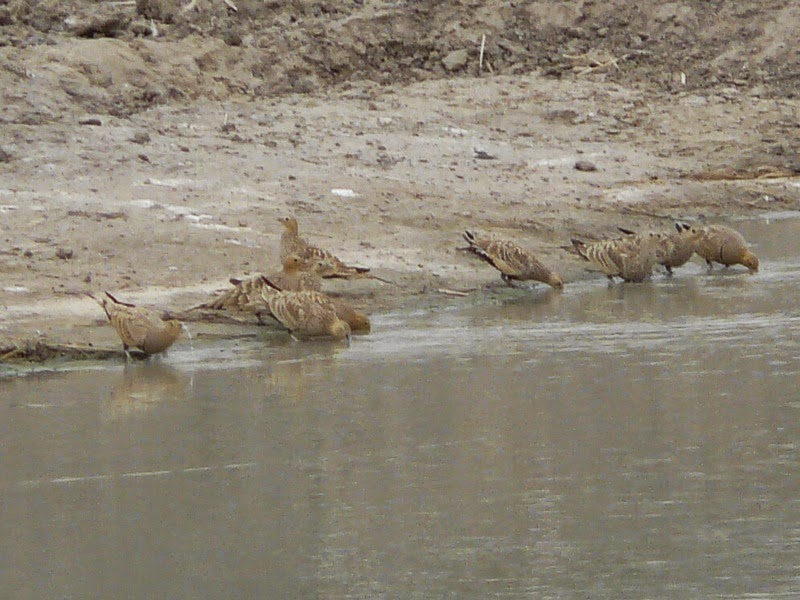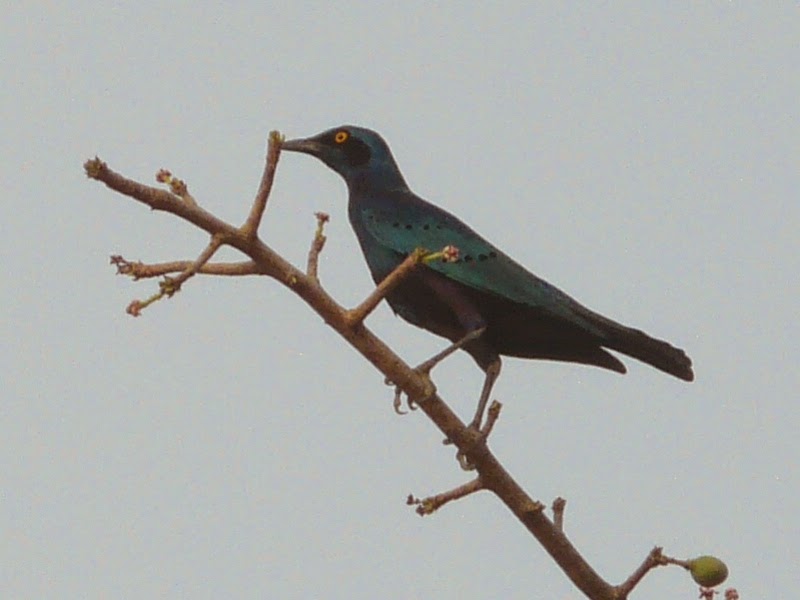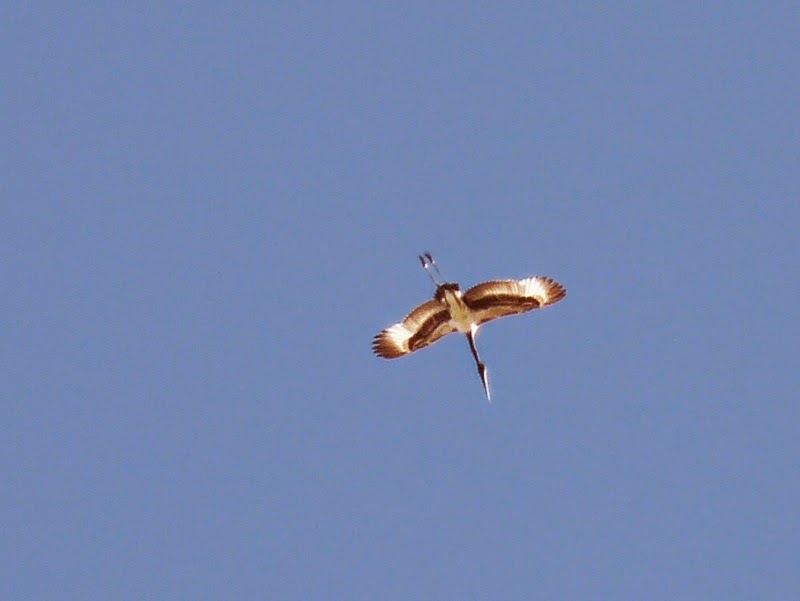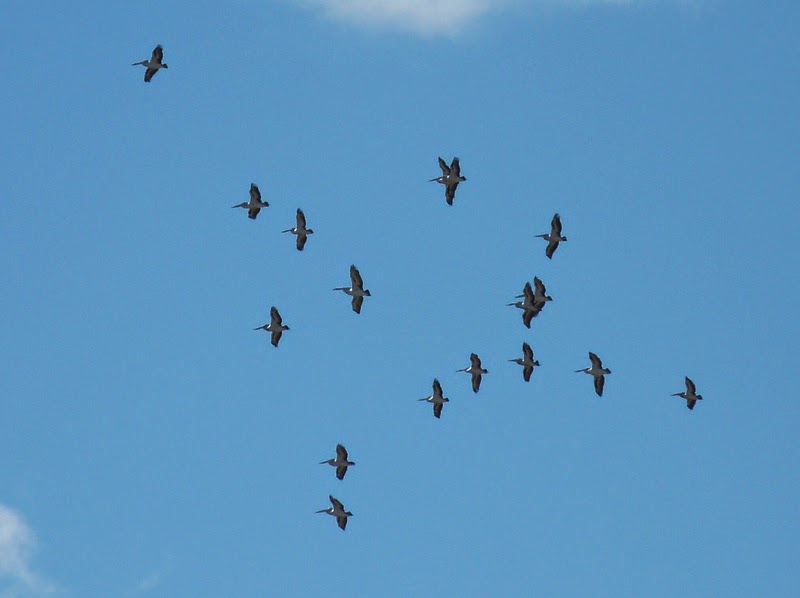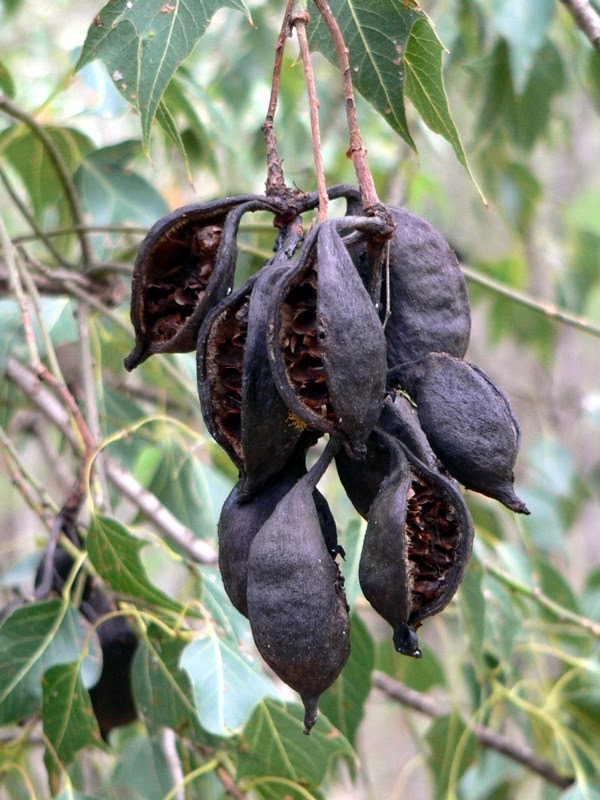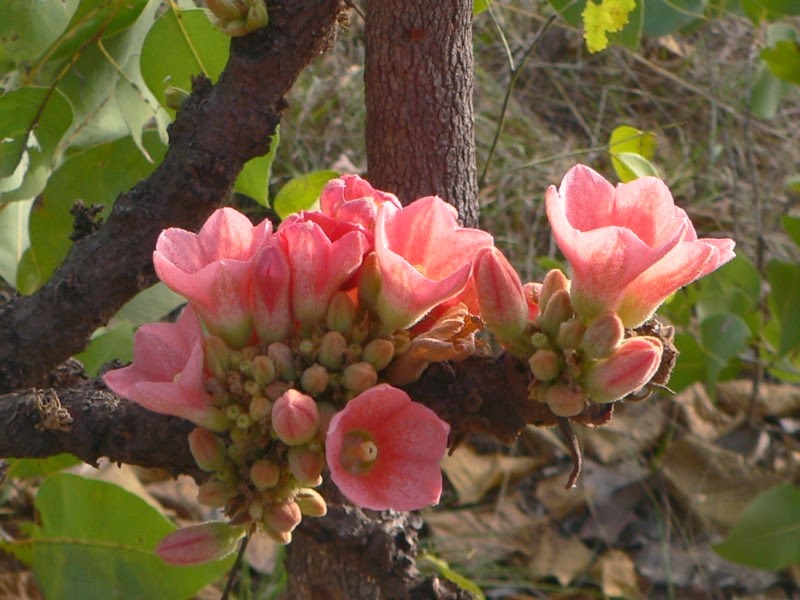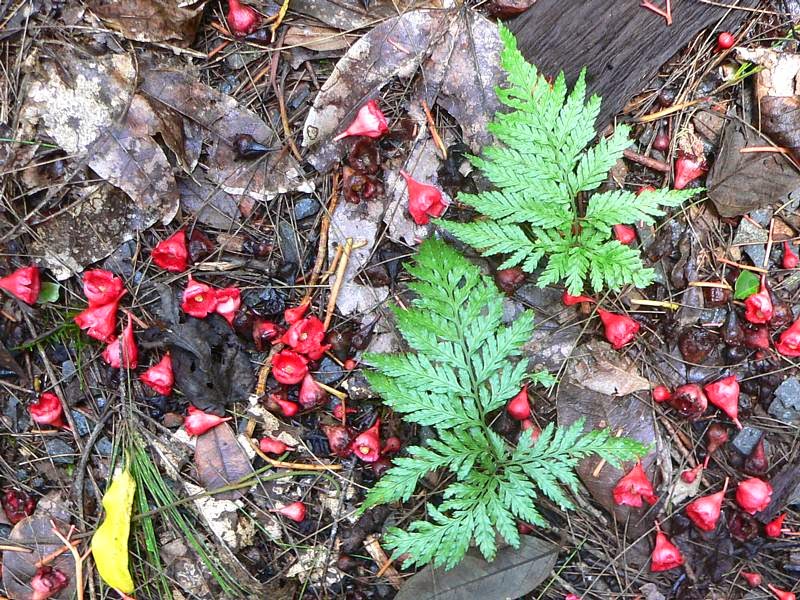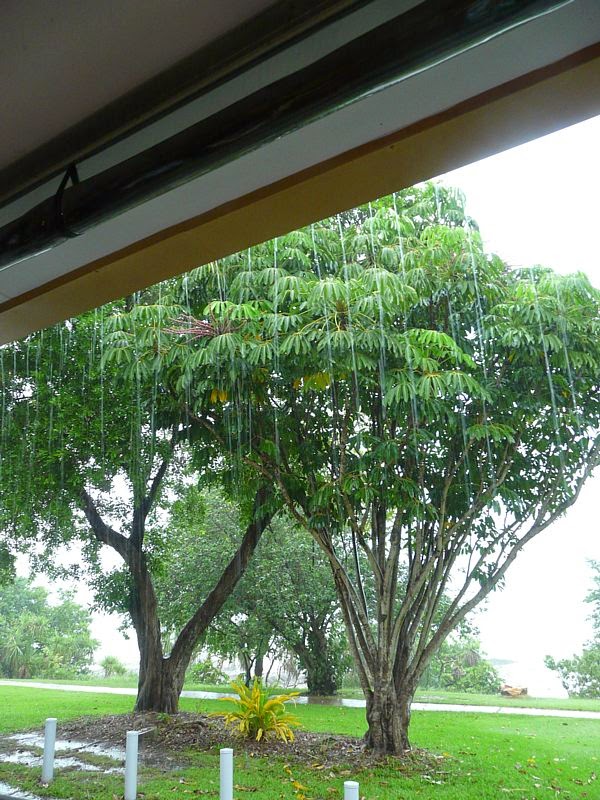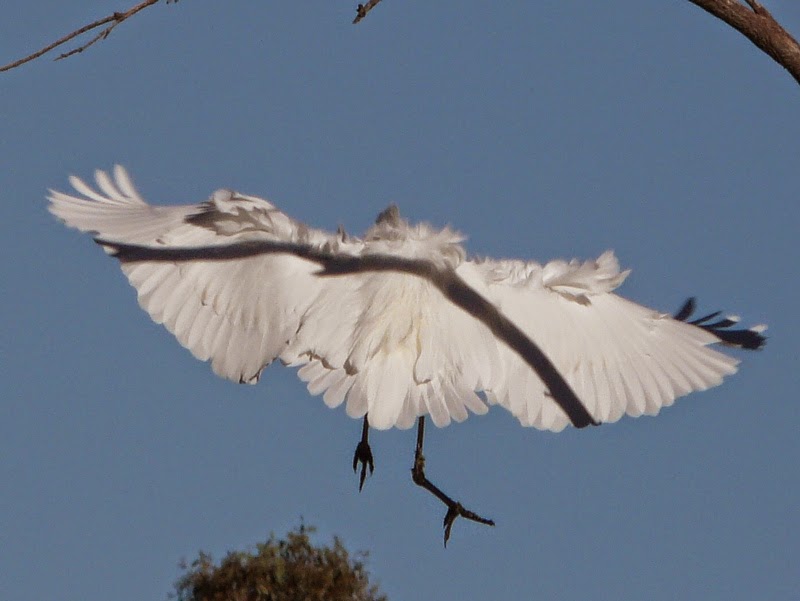In Quichua, the language once spoken by the Incas and still spoken by many indigenous Ecuadorians, Pacha Quindi means 'place of the hummingbirds'. It's not hard to see why Tony Nunnery and Barbara Bolz chose it for their superb and inspiring cloud forest home property in the Andes north-west of Quito. Their 'garden' - defined a little broadly perhaps, but not unreasonably - boasts the largest number of hummingbird species ever recorded in one place. That number is 42! They claim that on most days of the year you can see up to 19 species in an hour.
![]() |
Part of the Pacha Quindi garden; the cleared area is immediately surrounding Tony and Barbara's house
with regenerating cloud forest hemming it in on all sides. |
Tony and Barbara arrived in the upper Tandanyapa Valley nearly 20 years ago and bought first 30 hectares of land - a mix of forest and cleared cattle pasture - and with outside assistance later added another 50 neighbouring hectares. With a vast amount of physical labour and a lot of experimentation they set about first removing the densely matted exotic pasture grasses, and then encouraging the return of the forest, by direct planting (including of over 6000 trees) and by enabling natural regeneration to proceed. The results are remarkable.
![]() |
Photo from the Pacha Quindi garden.
A decade or so ago the ridge across the valley (as well as the foreground) was devoid of native vegetation. |
They employed local workers - often the same people who'd helped clear the forest to start with - but their very limited resources did not permit this on a permanent basis.
Tony was from Mississippi, where his family ran a building business, so he was equipped to tackle the task of building their beautiful timber home, which originally stood in the cow paddocks until they developed the garden around it. And with the plants came the hummingbirds; these cloud forests on the equator are fabulously rich in these amazing birds. Each hummer species has its preferred flowers, to which its bill has evolved in size and shape, and when these flowers are absent the provision of hanging hummingbird feeders helps ease the stress. However when the flowers are present, the birds eschew the feeders; in any case the feeders, charged with a sugar solution, do not provide the protein the birds need, which they obtain from insects and pollen. Nonetheless the 30 or so feeders use up to 40 kilograms of sugar a week in peak demand period (in February, when it is coldest and energy demands are correspondingly high). The birds drink over $1000 worth of sugar a year!
![]() |
Hummingbirds at Pacha Quindi feeder.
The stunner centre front, with his back to us, is a male Violet-tailed Sylph Aglaiocercus coelestis;
the rest are Buff-tailed Coronets Boissonneaua flavescens. |
It is essential to refill every day with fresh sugar water to prevent the risk of disease from contaminated solutions; each feeder must be regularly cleaned too.
Visitors are very welcome, but don't expect to just drive up the mountain and turn in when you see the sign. The access is unmarked, and comprises an obscure foot track through the roadside grass, which emerges in the lovely garden above the house. They need no driveway as they don't have a vehicle but use the local buses to go to town when required. Powerlines cross their land, but they have refused the offers to be connected to the electricity grid, opting for simplicity. They don't eat animal protein, so don't need refrigeration, and can run their computer and charge phones from solar-charged batteries.
![]() |
Looking down through epiphytes to the village of Tandanyapa in the valley below;
Tandanyapa lies almost exactly on the equator. |
To find them, visit the newly erected web site here: http://www.pachaquindi.com/ They can advise the best way to visit, or you can make arrangements through travel agencies. Local lodges can also help in theory, and often will in practice, though there have been some unfortunate incidents when staff of neighbouring lodges, presumably seeking to protect their employer's market share, have lied to guests about either not knowing of Pacha Quindi or even claiming it had closed. Don't believe such stories - Tony and Barbara aren't going anywhere soon!
![]() |
Tony Nunnery in his garden - he is a great communicator, passionate, articulate and funny.
He and Barbara met in Germany (from where she comes) and travelled south through the
Neotropics before settling in Ecuador. |
|
They do ask a very modest entry fee - $10 last I was there - which goes a little way towards maintaining the place and enabling them to live their very basic lives while doing their very important work. For that you'll get an amazing bird list and a never-forgotten experience. They have got small NGO grants in the past, Tony does bird guiding for a company from time to time to replenish the coffers, and your entry money - whether you go alone or with one of the bird tour companies who increasingly take their clients there - all helps keep it going.
However you can help more if you so desire too, by clicking on the Donations button on the web page. No, just saying - I have no vested interest whatever in the place, beyond what any caring person should.
In addition to the hummingbirds, over 300 bird species have been recorded for the property - which Tony claims, somewhat impishly, makes it the longest back yard bird list in the world. Many of these are Chocó endemics, the Chocó being the ridiculoulsy wet western slopes of the Andes in north-western Ecuador and adjacent Colombia; it is one of the world's great biodiversity hotspots and boasts more than 50 endemic bird species. In addition the mammal list for the property is startling, including Andean Bear, Puma and the remarkably recently 'discovered'
Olinguito. Not to mention the amazing botanical richness.
![]() |
Unidentified (by me!) orchid along one of the network of lovely walking tracks in the forest.
(As ever I'd be glad of your assistance.)
One of these tracks leads to a raised and enclosed bird hide facing the forested slope. |
I was startled to discover how few photos of Pacha Quindi I have, which doesn't make sense given how many images I have in my mind! I can only suppose that I've been so entranced by the place when I've been there that I've just forgotten my camera, not something I do often! Here are a few anyway.
![]() |
Eighty-eight Butterfly Diaethria anna under the house; named for the wing pattern.
(Thanks Rainer!) |
![]() |
Toucan Barbet Semnornis ramphastinus, a very special bird, one of the Chocó endemics, and readily seen
from the garden at Pacha Quindi. Its wonderfully melodious honking is one of the sounds of the cloud forests in
this part of the world. Now not regarded as either toucan or barbet, but one of only two
memebers of the newly erected family Semnornithidae. |
|
And I do have a couple of hummingbird pictures at least!
![]() |
Wedge-billed Hummingbird Schistes geoffroyi. An uncommon hummer which sometimes
(but not always) 'cheats' by puncturing the base of flowers with its awl-like bill to steal nectar.
A regular in the garden. |
![]() |
| Brown Inca Coeligena wilsoni is restricted to the west slopes of the Andes, in Ecuador and Colombia. |
![]() |
White-tailed Hillstar Urochroa bougueri, another scarce hummingbird resident at Pacha Quindi.
This bird regularly roosts on garden implements under the house! |
Pacha Quindi is not yet on the main ecotourist trail, but that's changing, and so it should. I'd love you to support Tony and Barbara's work however you can - and the first way to do so would be to visit them!
It's always a highlight of my visits to Ecuador - and Ecuador is a treasure trove of highlights. One more memory of Pacha Quindi, not of its natural wonders. By now you won't be amazed to hear that Tony and Barbara are also accomplished musicians (Tony studied music composition) and as we left in fading light from my first visit there, we were followed by a superb and energetic jazz piano solo from Tony. Every now and then I wonder how they got the piano from the road down to the house - and how they keep their instruments tuned in 100% humidity. But everything about Pacha Quindi is pretty wonderful.
BACK ON WEDNESDAY


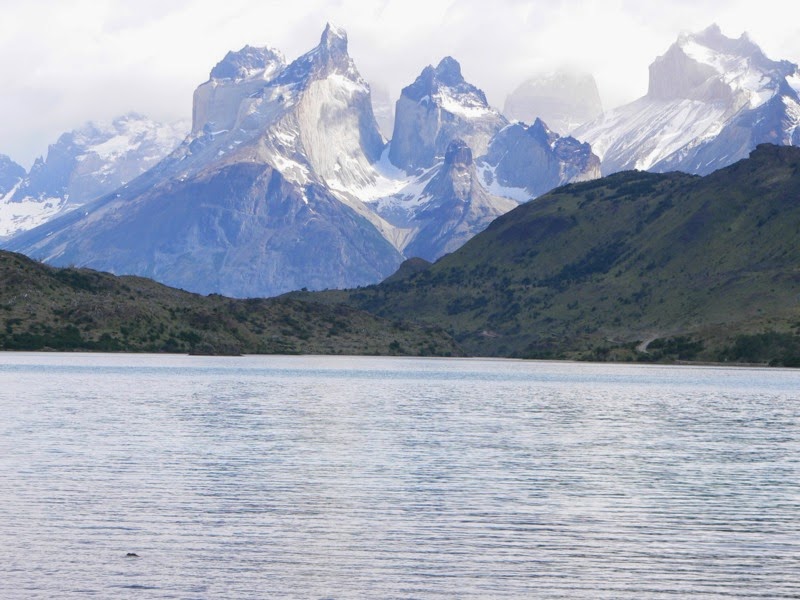











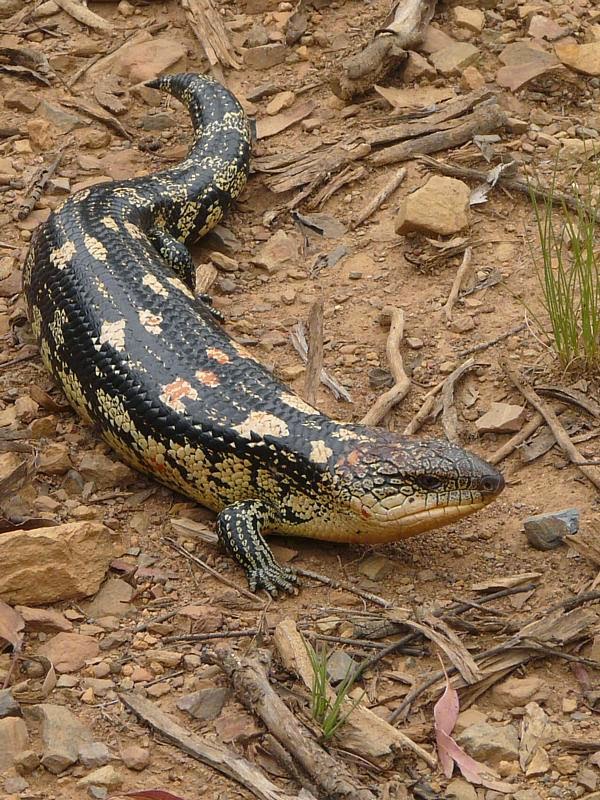
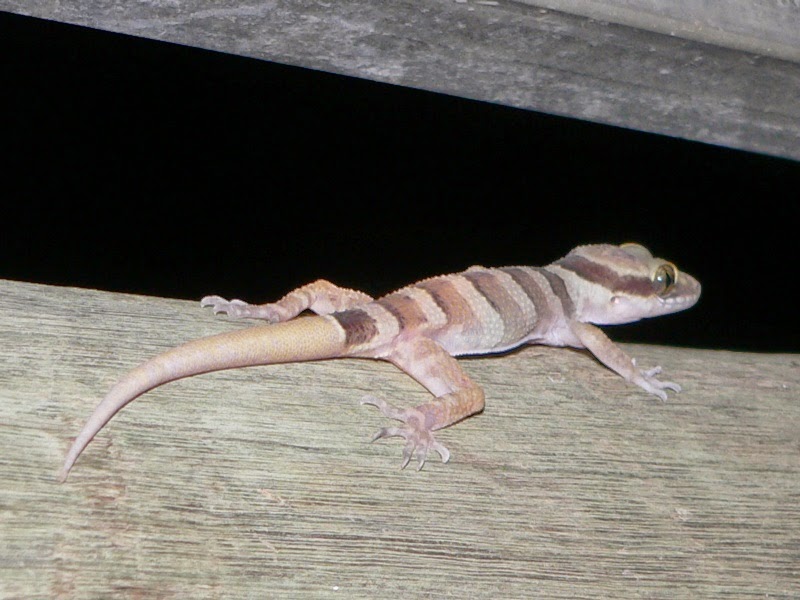



%2BBundanoon%2B1008.jpg)
%2BBundanoon%2B1008.jpg)
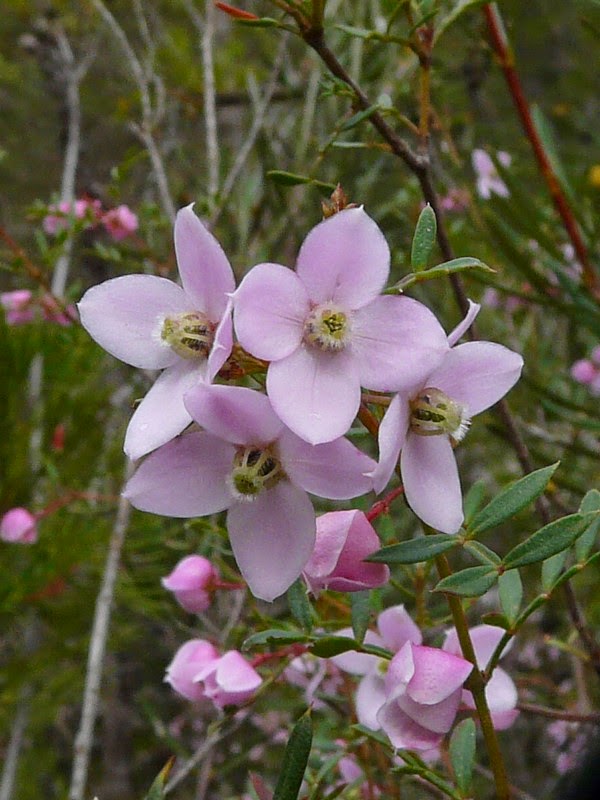

%2BBundanoon%2B1008.jpg)
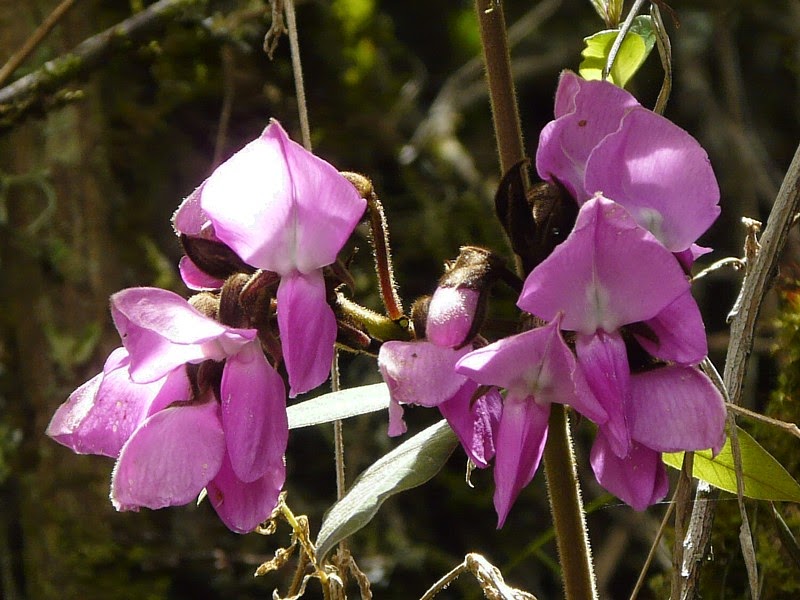%2Babove%2BMachu%2BPichu%2B1208.jpg)











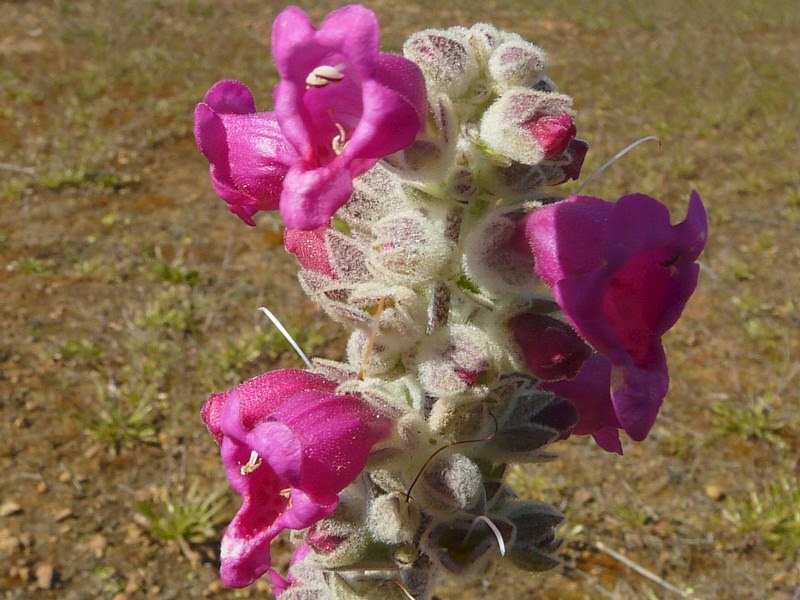%2Bcloseup%2BPindar%2B0908.jpg)

%2BPinnacles%2B0808.jpg)

%2BKalbarri%2B0808.jpg)

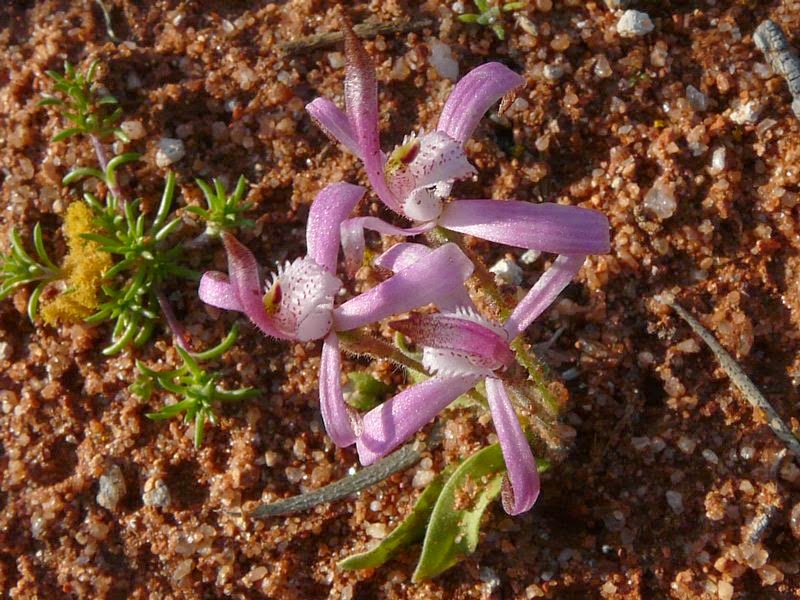


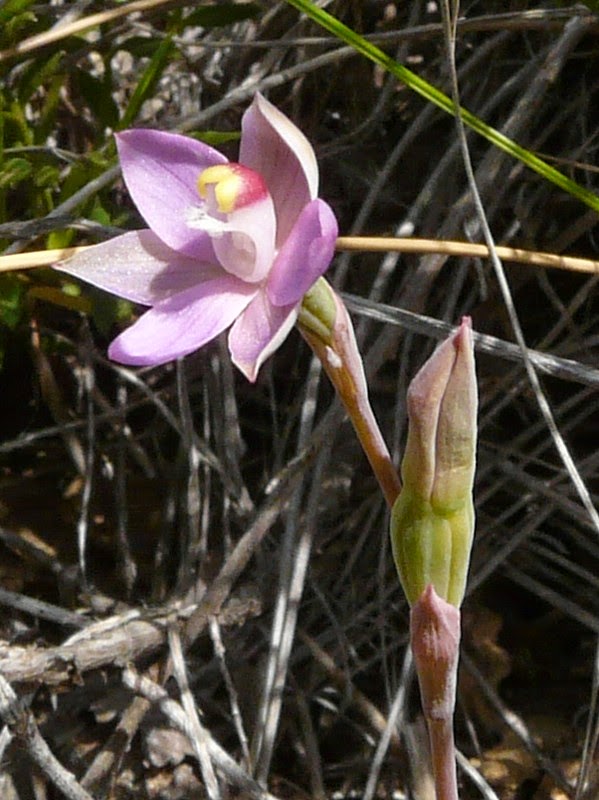



%2Bnth%2Bof%2BMaroua%2BCameroon%2B0308.jpg)







